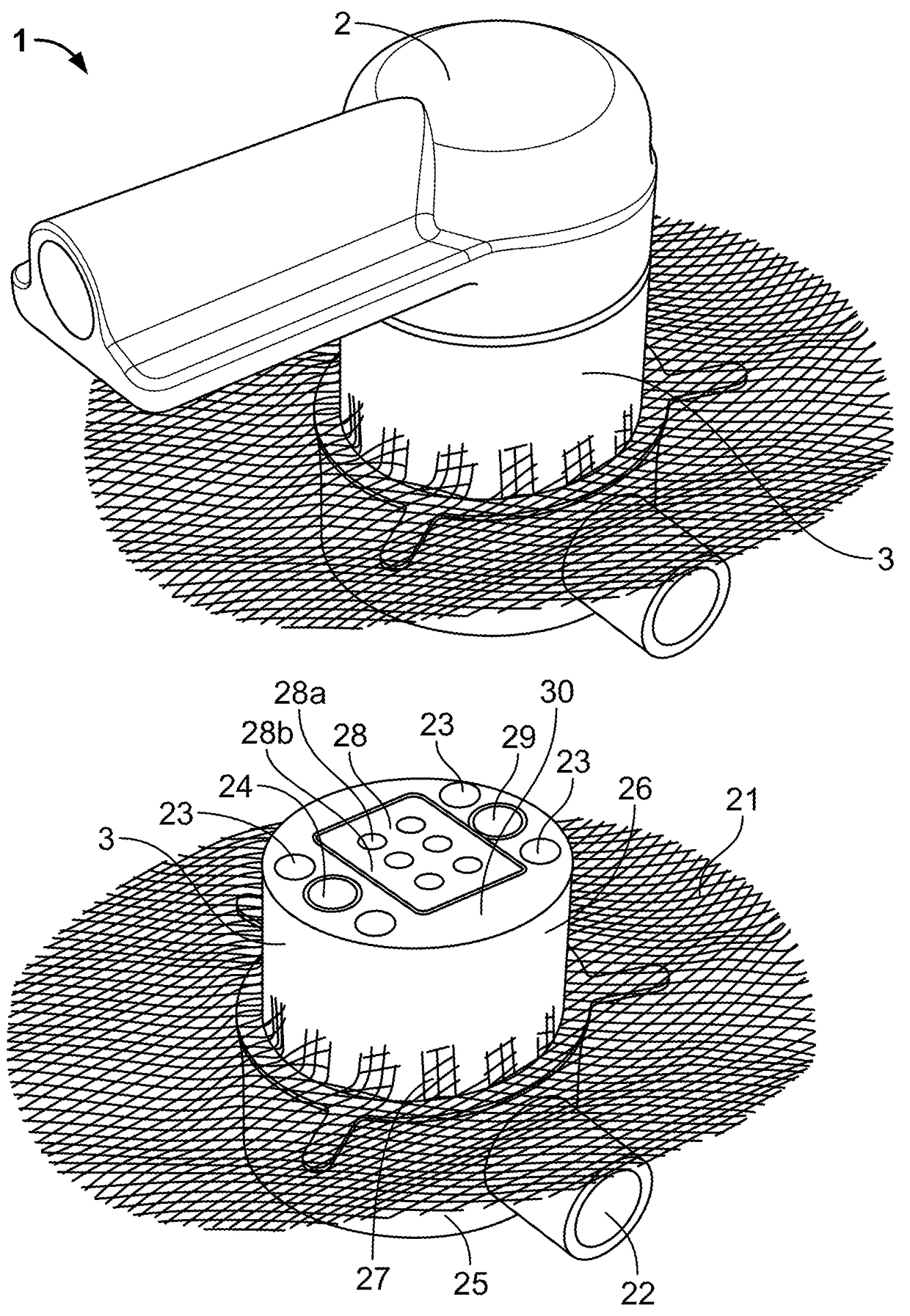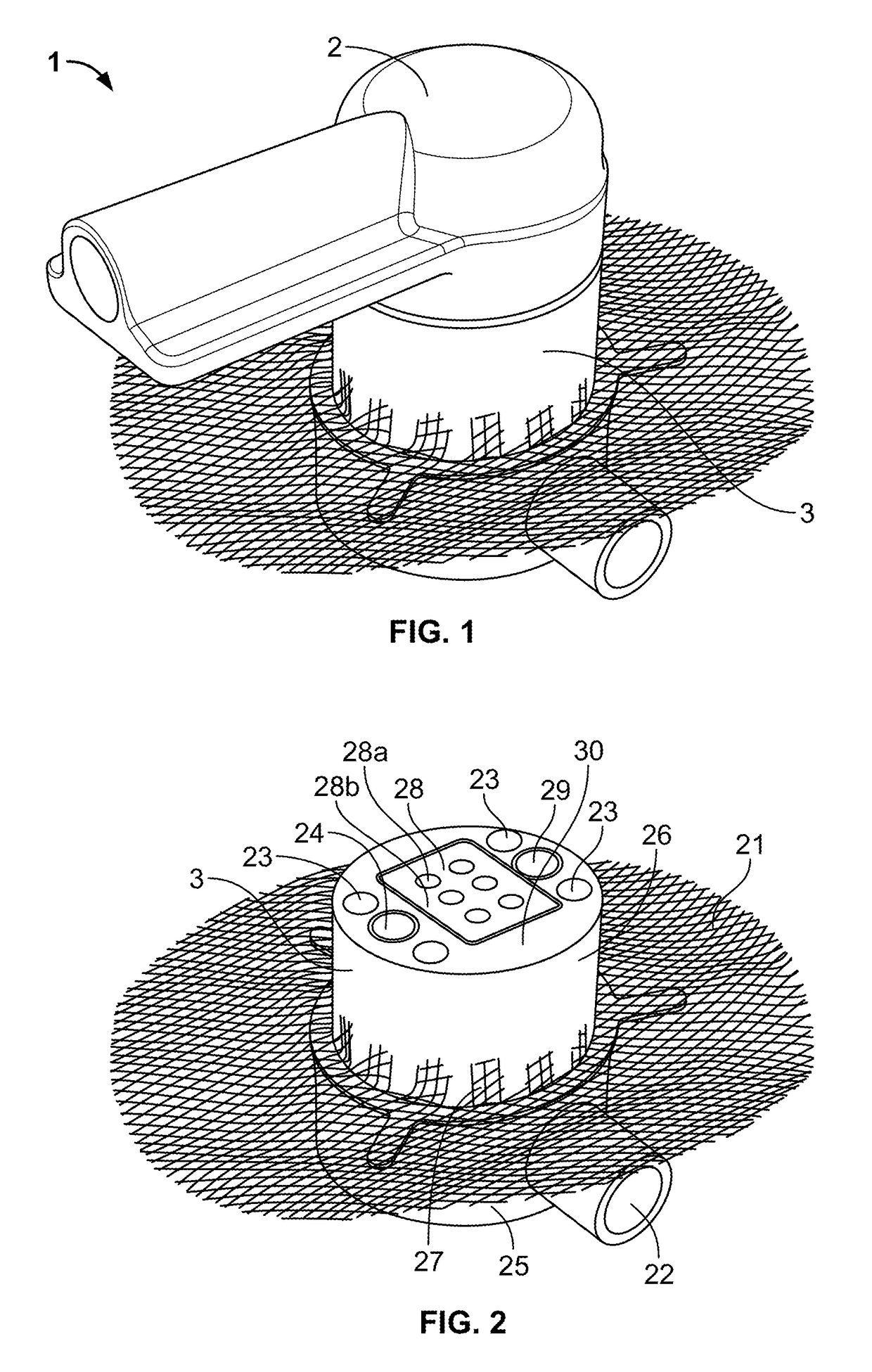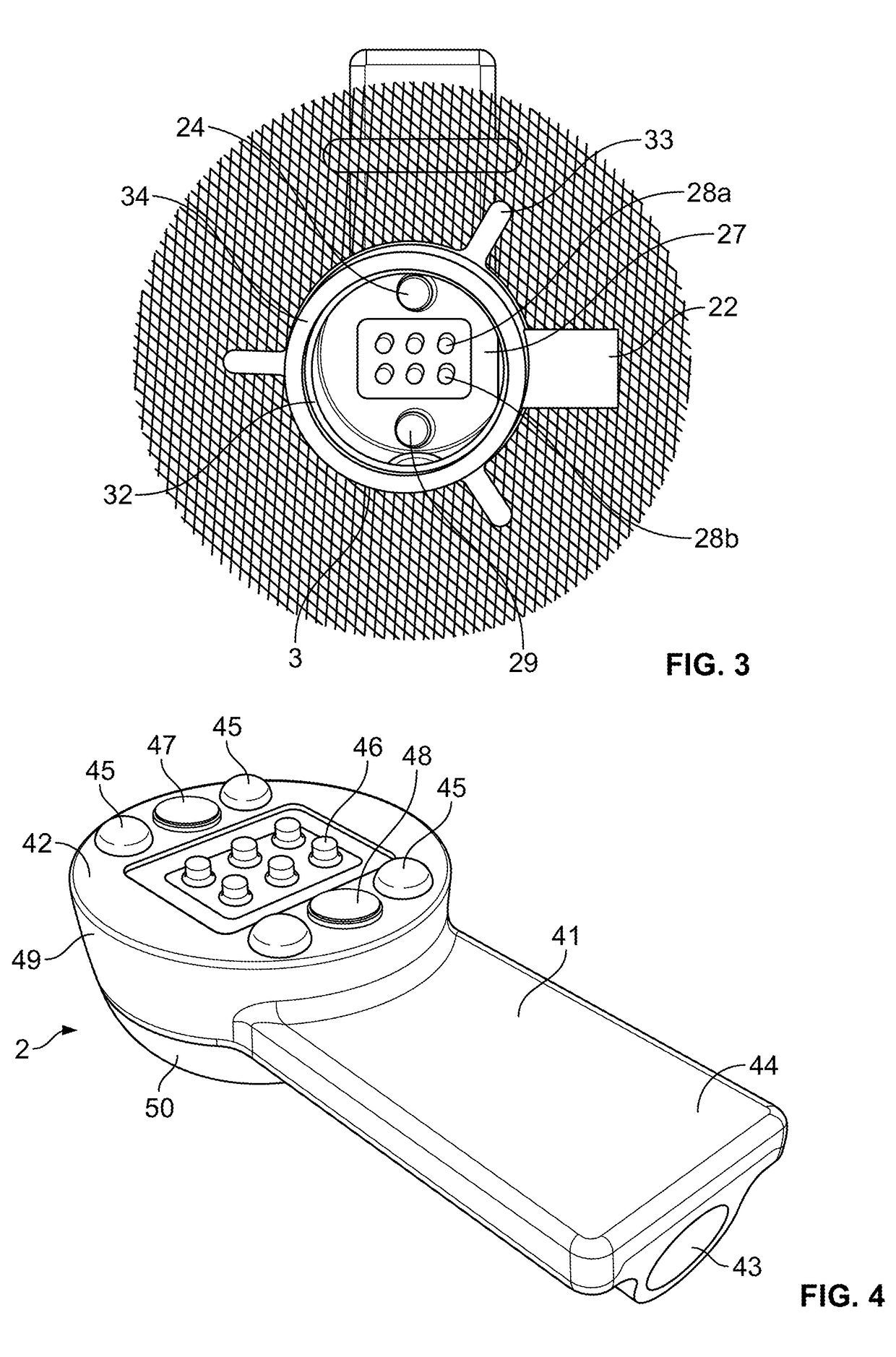Percutaneous connector and associated methods of use
a percutaneous connector and connector technology, applied in the direction of coupling device connection, engagement/disengagement of coupling parts, prosthesis, etc., can solve the problems of shortening the life span, achieve lateral stabilization of the percutaneous connector, promote skin ingrowth, and reduce trauma
- Summary
- Abstract
- Description
- Claims
- Application Information
AI Technical Summary
Benefits of technology
Problems solved by technology
Method used
Image
Examples
Embodiment Construction
[0029]In a first embodiment, illustrated in FIGS. 1-7, a percutaneous connector 1 comprises a cap 2 and a base 3. As will be discussed more fully below, the percutaneous connector 1 is designed to provide a detachable electrical connection between an internally implanted device and an external controller or device. One type of internal device contemplated for use with the percutaneous connector is disclosed in U.S. Pat. No. 6,688,861, the entirety of which is incorporated by reference as if fully set forth herein. The external controller used with the percutaneous connector may be similar to that disclosed in pending U.S. application Ser. No. 12 / 602,914 filed May 24, 2010, the entirety of which is incorporated by reference herein as if fully set forth herein. Other internal devices (e.g. a transcutaneous energy transfer (TET) system, pacemaker, insulin pump, dialysis device, automatic implantable cardioverter defibrillator) and external controllers, and associated power sources, may...
PUM
 Login to View More
Login to View More Abstract
Description
Claims
Application Information
 Login to View More
Login to View More - R&D
- Intellectual Property
- Life Sciences
- Materials
- Tech Scout
- Unparalleled Data Quality
- Higher Quality Content
- 60% Fewer Hallucinations
Browse by: Latest US Patents, China's latest patents, Technical Efficacy Thesaurus, Application Domain, Technology Topic, Popular Technical Reports.
© 2025 PatSnap. All rights reserved.Legal|Privacy policy|Modern Slavery Act Transparency Statement|Sitemap|About US| Contact US: help@patsnap.com



